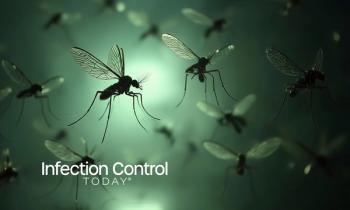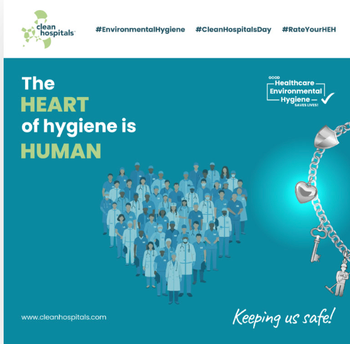Evolving Symptomatology: Respiratory Viruses in the Era of COVID-19 Variants
As COVID-19 restrictions eased up, other respiratory viruses began circulating alongside SARS-CoV-2. It's crucial to identify cases and understand the symptoms of these infections to track the evolution of the virus and what health care workers should look out for.
When the United Kingdom government implemented a new approach to "living with COVID-19" in February 2022, other countries soon followed suit. As restrictions were lifted and people returned to their usual interactions, respiratory viruses and SARS-COV-2 resurfaced that had been suppressed because of lockdowns and effective precautions. This resulted in a rise in hospitalizations and deaths related to influenza and the reemergence of respiratory syncytial virus (RSV) for all age groups. Due to limited testing availability, diagnosing and managing these infections caused concern.
A study recently published in Scientific Reports, titled “Symptom Profiles of Community Cases Infected by Influenza, RSV, Rhinovirus, Seasonal Coronavirus, and SARS-CoV-2 Variants” of Concern, discusses the symptoms for each of the viruses and how health care workers and the public can determine which illness a patient has to prevent spread.
“[The investigators] describe the symptom profile for multiple respiratory viruses that are now cocirculating with SARS-CoV-2,” according to the study. Over time, the symptom profile of SARS-CoV-2 illnesses gradually became more similar to other respiratory viruses through increased frequency of cough, sneezing, runny nose, and sore throat. Furthermore, the frequency of SARS-CoV-2 illnesses meeting the World Health Organization (WHO) [acute respiratory infection] ARI case definition has significantly increased with the Omicron BA2 and BA5 variants. Fever remains more common in influenza than other respiratory viruses studied. The growing similarity between symptoms of SARS-CoV-2 and other respiratory illnesses will make syndromic surveillance less effective, [emphasizing] the importance of multipathogen virological surveillance. Continued use of diagnostic tests to distinguish between influenza and SARS-CoV-2 will be important for high-risk patients in whom antiviral medication is being considered.”
The investigators noted that a critical gap existed in understanding the differences in symptomatology between SARS-CoV-2 and other common respiratory viruses. In addition, the emergence of multiple variants of concern (VOC) during the pandemic further complicated the picture. The study examined the symptom profiles of various respiratory infections, offering valuable insights into how SARS-CoV-2's symptoms have evolved with the emergence of different variants.
Two household community cohort studies, Flu Watch (2006–2011) and Virus Watch (2020–2022) were conducted in England and Wales to monitor influenza, RSV, rhinovirus, seasonal coronavirus, and SARS-CoV-2 epidemiology. Participants in these studies reported symptoms through weekly surveys that allowed investigators to analyze symptom frequencies during illnesses caused by different respiratory viruses.
The data revealed noteworthy changes in the symptom profiles of SARS-CoV-2 illnesses over time. Specifically, as SARS-CoV-2 variants emerged, the symptomatology increasingly resembled that of other respiratory viruses. There was a significant increase in the frequency of cough, sneezing, runny nose, and sore throat with the Omicron strains.
Fever remained more common among influenza cases than other respiratory viruses, with SARS-CoV-2 showing lower proportions of fever cases. However, the proportion of SARS-CoV-2 illnesses meeting the World Health Organization (WHO) acute respiratory infection (ARI) case definition significantly increased with the Omicron variants, highlighting the evolving nature of the virus's symptoms.
Several factors may explain these observed changes in SARS-CoV-2 symptomatology. The increased presence of cough and sneezing with Omicron strains could contribute to their heightened transmissibility, as these symptoms facilitate the expulsion of viral particles. Another possible role in symptom evolution could be changes in population immunity due to natural infections and vaccinations.
This study underscores the growing similarity between SARS-CoV-2 and other respiratory illnesses, which could challenge surveillance and prevention efforts. Distinguishing between influenza and SARS-CoV-2 infections through diagnostic tests remains essential, particularly for high-risk patients eligible for antiviral treatment.
As SARS-CoV-2 continues to evolve, so does its symptomatology, making it increasingly similar to other respiratory viruses. This transformation has implications for public health efforts and diagnostic strategies. Understanding the changing nature of symptoms and their associations with viral variants will be essential in managing respiratory infections effectively, especially now that COVID-19 has become endemic. Continuous multipathogen surveillance and targeted diagnostics are key components of the ongoing battle against these respiratory viruses.
Reference
Geismar C, Nguyen V, Fragaszy E, et al. Symptom profiles of community cases infected by influenza, RSV, rhinovirus, seasonal coronavirus, and SARS-CoV-2 variants of concern. Sci Rep. 2023;13(1):12511. Published 2023 Aug 2. doi:10.1038/s41598-023-38869-1Bottom of Form
Newsletter
Stay prepared and protected with Infection Control Today's newsletter, delivering essential updates, best practices, and expert insights for infection preventionists.






